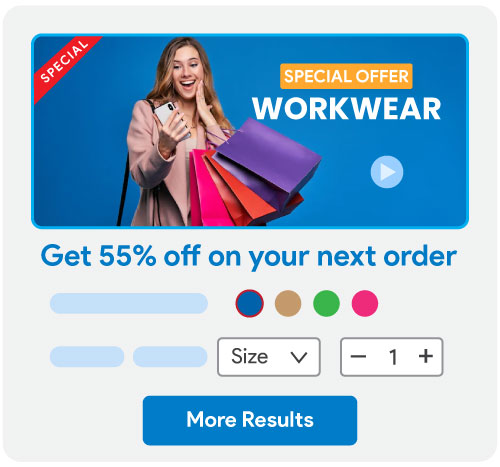Achieving conversion rate optimization (CRO) isn’t as easy as said. One of the sure-fire techniques to improve CRO is by A/B testing different aspects on your website. However, testing every random element of your website can waste your time and resources. That is, it won’t contribute to revenue generation. So, e-commerce site owners should know what to test.
This blog lists 19+ eCommerce AB testing elements to be optimized this year. But, the first things first.
Contents
What is eCommerce AB Testing?
Your ecommerce store might be running in a reasonably successful manner and generating decent revenue. However, if you are still dubious about your conversion funnel, give A/B testing a try!
Even if you have some idea about where you are messing up, you still can’t decide where to begin A/B testing. That’s why we’ve come up with some elements testing which would be profitable for you. And do remember to keep testing consistently to get the desired conversion optimization outcomes for your site.
19+ Ecommerce AB Testing Elements You Need to Optimize
1. Typography Of Headings

The typography on the headings, sales copy, product descriptions, and more on your e-commerce store has been proven to have a major impact on conversions. The aspects of typography that you need to test are the font sizes, their styling, typefaces, and color.
2. Size Of Headings
Your headings need to have big-sized letters. So, test different huge font sizes to decide which best suits your audience’s preferences. Larger fonts are legible and tend to work better, but not always.
3. Style and typefaces
When it comes to styling, experiment with text formatting, complementary fonts, etc. Also, test sans–serif fonts against serif to find which best attracts the users’ attention. Not all of them of course, only one or two typefaces from the entire lot.
4. Text color

Oftentimes, websites use black text on a white background when it comes to their long-form copy. And when it comes to Calls to Action (CTA), they use some color that stands out. Test to find those color combinations that are appealing to your users.
5. Calls to action

CTAs are other vital aspects of a website. These have an ultimate effect on the conversions. Here are the ingredients you need to test with regards to CTA.
- Position Of Your CTA: Positioning your CTA at the ideal place can increase click through rate. So, test different CTA placements such as above the fold, below the fold, in relationship to the copy, and the right/left/middle of the page.
- CTA’s Color: We’ve touched on this in the earlier section. So, here’s more info on why you should A/B test your CTA’s color. HubSpot found that a red CTA button increased conversions by 21 over that of a green one. But Content Verve post mentioned that a green “add to cart” button brought in 35.81 percent more sales for an e-store than a blue one. So, test to find what color would best suit your store.
- Text Of The CTA: The copy on your CTA matters as much as its color. So, try out different action verbs, lengths, power words, and pronouns. Who knows a minor alteration such as replacing “Buy now” with “Check out now!” can bring a million-dollar revenue. So, make sure to tap into those potential returns.
- Shape Of Your CTA Button: The shape of your CTA button can also affect conversions. So, A/B test to find whether a rectangle, rounded rectangle, rounded corner rectangle, or a mixed shape button would work for your audience.
6. Visual Elements/Media
The visual elements on your e-commerce site are as important as the copy. Nowadays, people are more interested in visual elements and media than text. Here are the things that you need to test with regards to media.
- Image Size: The appeal to the big or small size of an image on your e-store can rely on different factors like relevance, placement, and type (more on this will be discussed in the next section). So, keep these aspects in mind before A/B testing image sizes.
- Types Of Images: You may choose between images of people or images of objects and between images and videos.
- Images of people or objects: When you go for the former, ensure that you use a single subject image and not a crowd shot. Also, make it a point that the person’s image matches your target audience. This will give a genuine representation. And when it comes to images of objects, make sure that they’re as per the service you offer. It should reinforce the message in a visually relevant way.
- Images or videos: If your e-commerce business offers complex products/services, you’d need to educate your visitors, so that they convert. A super-short video along with a persuasive message can do the job. You can A/B test the type of media type that helps shoppers make an informed decision and increases conversions.
7. Alignment Of Media

One of the biggest eCommerce marketing mistakes is, not giving much importance to the alignment of media on your e-store. The alignment of media would greatly depend on the text placement. Make sure that they’re complementary. You may even alternate between right and left alignment for the images. Sometimes, a central alignment may work well. So, test what works best for your store.
8. Copy Of Headings
The written text on your e-commerce sites’ headings, sales copy, product descriptions, etc. can have a greater impact on website conversions. For, it is the message that is conveyed through these that motivates people to take/not take a favorable action.
9. Heading Wordings
One of the crucial ecommerce AB testing elements that you shouldn’t miss out on is the heading’s wordings. It can help you identify the most effective phrase in heightening your conversion rates.
10. Body-copy
Test long-form copy against short-form. While short-form looks attractive to gain the attention of the buyer, some audiences may prefer the long, detailed, and explanatory one. For instance, a Scandinavian gym chain increased its conversions by 11 percent with a shorter copy. But Crazy Egg generated 7.6 percent more and better-quality leads with a long-form copy. So, A/B tests to find your audience’s preference.
11. Placement and structure
Try different strategic placements of User Generated Content (UGC) amidst your body copy. Go for the version that significantly increases the page’s conversions.
12. Testing Different Tones
Each style of tone viz., humorous, technical, non-technical, authoritative, straightforward, or casual has its own merits and demerits. The key is to find the right fit for your audience. So, A/B tests different tones of content to identify which brings the best results.
13. Website layout
Your website’s layout is another vital ecommerce AB testing element. There are three elements you should test in this regard. These include the navigation, the search feature, and the navigation links.
14. Navigation Vs no navigation
Oftentimes, websites remove the navigation menu from their landing page to eliminate distractions for the visitor as they move through the marketing funnel stages. However, this doesn’t work in all cases. Some sites have found their conversions to go down following the removal of the navigation menu. This is because visitors feel trapped. So, A/B tests to find whether your shoppers prefer your site with or without it.
15. Manual search Vs drop-down search
Searching through your site should be made as quick and easy as possible. A minimalistic design with a single search bar for carrying out manual searches may look inviting. However, providing shoppers with a down menu with clear choices would help shoppers make quick decisions. A/B test to find out which of these two features your audience prefers.
16. Navigation links
The way you present your navigation can influence how many visitors get to your sales pages (contact form, pricing pages, etc.). So, test the number of links on a page, its positioning, color, etc. to find the optimum of those.
17. Product page
Your product pages’ design and display have a big impact on the conversions. Anything done wrongly can cost you money- making it one of the most significant ecommerce AB testing elements to be optimized.
18. Product image display

Experiment with different ways of displaying your product images. You can A/B test a product image that shows an isolated image of the item against a solid background against one that shows a lifestyle (someone while using that product).
19. Product page view
You can choose two different views to present your product view to shoppers. One is the list view and the other is the grid view. The former view displays the product pictures on the left side and the respective product info on the right side. The grid view presents thumbnails of product images with a little info about each product right below it. A/B test to find which of the two is preferred by your audience.
20. Tags on preview pages
E-commerce stores can make more sales by tagging their items on sale with tags such as “new arrival”, “great value”, “up to 50% off”, etc. A/B tests different tags to find the winners so that you can optimize your future marketing efforts accordingly.
Conclusion
While optimizing each element can help maximize your conversions, A/B testing between variations that won’t make significant differences would be just a waste of resources.
So, instead of implementing all ecommerce AB testing elements discussed in this blog, figure out those that are the most crucial in bringing about a favorable change. Also, do remember to keep testing consistently to get the desired conversion optimization results. And that will be profitable for your e-commerce business!
Read more:

























 Email
Email SMS
SMS Whatsapp
Whatsapp Web Push
Web Push App Push
App Push Popups
Popups Channel A/B Testing
Channel A/B Testing  Control groups Analysis
Control groups Analysis Frequency Capping
Frequency Capping Funnel Analysis
Funnel Analysis Cohort Analysis
Cohort Analysis RFM Analysis
RFM Analysis Signup Forms
Signup Forms Surveys
Surveys NPS
NPS Landing pages personalization
Landing pages personalization  Website A/B Testing
Website A/B Testing  PWA/TWA
PWA/TWA Heatmaps
Heatmaps Session Recording
Session Recording Wix
Wix Shopify
Shopify Magento
Magento Woocommerce
Woocommerce eCommerce D2C
eCommerce D2C  Mutual Funds
Mutual Funds Insurance
Insurance Lending
Lending  Recipes
Recipes  Product Updates
Product Updates App Marketplace
App Marketplace Academy
Academy

